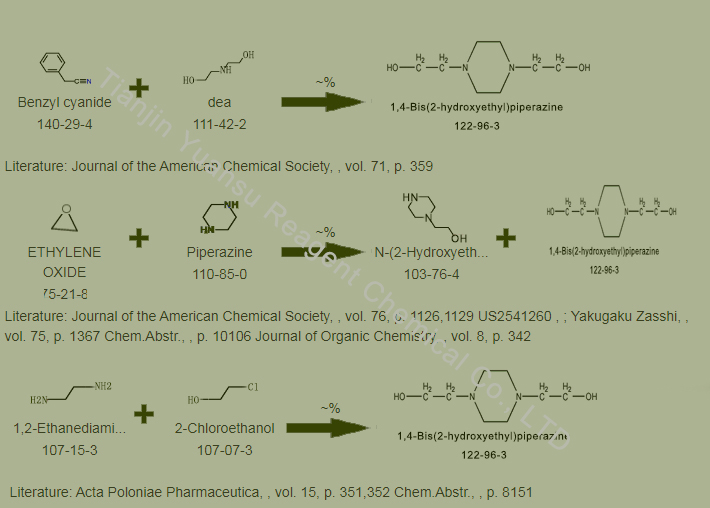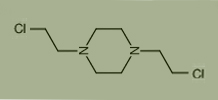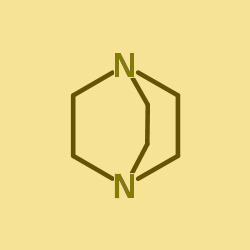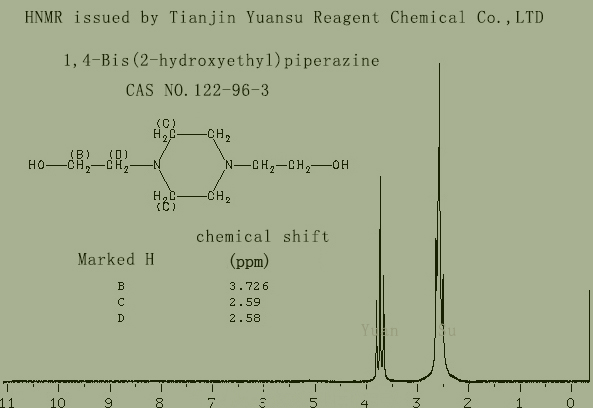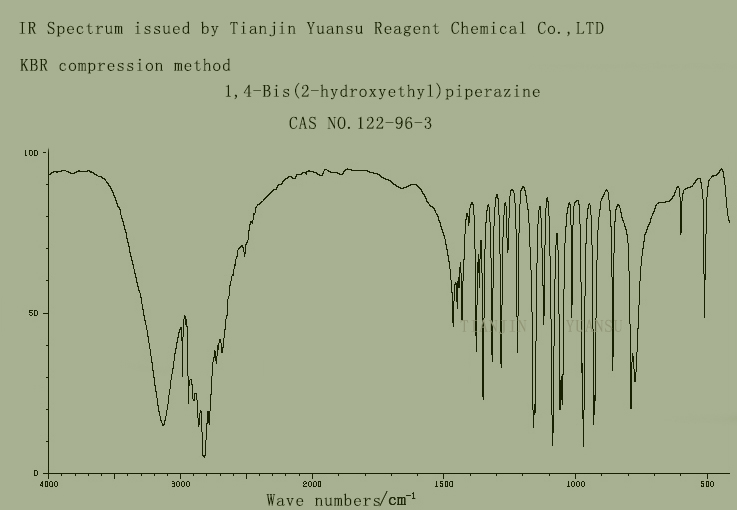1,4-Bis(2-hydroxyethyl)piperazine
What is 1,4-Bis(2-hydroxyethyl)piperazine, cas no:122-96-3,a producer telling you the result.
CAS NO.122-96-3
If you need the products .Please send your inquiry to us through e-mail: sales@yuansu-reagent.com
To begin with, let us tell you what is the basic information of 1,4-Bis(2-hydroxyethyl)piperazine ?
|
Molecular Formula |
C8H18N2O2 |
Molecular Weight |
174.241 |
|
Density |
1.1±0.1 g/cm3 |
Boiling Point |
305.7±0.0 °C at 760 mmHg |
|
Flash Point |
166.2±22.4 °C |
Melting Point |
133.5-136 °C(lit.) |
Like many stuff, it has many synonyms as follows
|
MFCD00006157 |
|
1,4-Piperazinediethanol |
|
N,N′-Bis(2-hydroxyethyl)piperazine |
|
2-[4-(2-hydroxyethyl)piperazin-1-yl]ethanol |
|
2,2'-(Piperazine-1,4-diyl)diethanol |
|
2,2'-piperazine-1,4-diyldiethanol |
|
N,N'-Bis(β-hydroxyethyl)piperazine |
First, the chemical is very special, some technical indexes as below
If you need the products .Please send your inquiry to us through e-mail: sales@yuansu-reagent.com
toxicology data
1. Skin/Eye Irritation: Rabbit Skin Irritation Test: 10mg/24h has slight irritation to the skin.
2. Acute toxicity: Oral LD50 in rats: 3730mg/kg
Rabbit skin LD50:>10mL/kg
Ecological data
Currently unavailable
Molecular structure data
1. Molar refractive index: 47.30
2. Molar volume (m3/mol): 158.7
3. Waiting ratio (90.2K): 407.5
4. Surface tension (dyne/cm): 43.4
5. Polarization rate (10-24cm3): 18.75
Calculate chemical data
1. Reference value for hydrophobic parameter calculation (XlogP): -1.3
2. Number of hydrogen bond donors: 2
3. Number of hydrogen bond acceptors: 4
4. Number of rotatable chemical bonds: 4
5. Number of tautomers: None
6. Topological molecule polarity surface area 46.9
7. Number of heavy atoms: 12
8. Surface charge: 0
9. Complexity: 99.6
10. Number of isotopic atoms: 0
11. Determine the number of atomic stereocenters: 0
12. Uncertain number of atomic stereocenters: 0
13. Determine the number of chemical bond stereocenters: 0
14. Number of uncertain chemical bond stereocenters: 0
15. Number of covalent bond units: 1
Second, the Synthetic Route we will recommend is the most important for your reference?
First, synthesis line of 1,4-Bis(2-hydroxyethyl)piperazine CAS NO.122-96-3 as follows
Manufacturing method:
There are two main methods for preparing N, N '- Bis (2-hydroxyethyl) piperazine. One method is to react ethylene glycol with piperazine under acidic conditions to obtain the product. Another method is to condense ethylene glycol with piperazine in the presence of an alkaline catalyst.
Third, what is the usage of 1,4-Bis(2-hydroxyethyl)piperazine CAS NO.122-96-3 ? pleas see below
If you need the products .Please send your inquiry to us through e-mail:sales@yuansu-reagent.com
Usage:
The main use of N ' N - Bis (2-hydroxyethyl) piperazine is as an insecticide and acaricide. It can be used in agriculture, horticulture, and household hygiene fields to prevent and control various pests and mites, such as leaf rollers, whiteflies, red spider mites, etc.
Other usage:
Used for the synthesis of 1,4-Bis(2-chloroethyl)piperazine Cas no. 1009-85-4
Used for the synthesis of DABCO Cas no. 280-57-9
Besides Safety Information of 1,4-Bis(2-hydroxyethyl)piperazine CAS NO.122-96-3 is also important when handling it
|
Hazard Codes |
Xi |
|
WGK Germany |
3 |
|
H.S.Code: |
2933 3990.99 |
|
TSCA |
Yes |
|
HazardClass |
IRRITANT |
What is the appearance of 1,4-Bis(2-hydroxyethyl)piperazine CAS NO.122-96-3? Please see the picture of 1,4-Bis(2-hydroxyethyl)piperazine CAS NO.122-96-3, below
If you need the products .Please send your inquiry to us through e-mail: sales@yuansu-reagent.com
Specification of 1,4-Bis(2-hydroxyethyl)piperazine CAS NO.122-96-3, is below
Apperance: white crystal powder
Assay: 99 min by HPLC
IR identity: conform
Water:0.5% max by K.F.
HNMR picture of 1,4-Bis(2-hydroxyethyl)piperazine CAS NO.122-96-3 is as follows,
IR picture of 1,4-Bis(2-hydroxyethyl)piperazine CAS NO.122-96-3 is as follows,
Reference of Article cited for your reference below,
(1)
Novel Biocompatible Hydrogels via Click Chemistry
Publication Name: Gels Horizons: From Science to Smart Materials
Publication Date: 2021
DOI: 10.1007/978-981-15-7138-1_16
(2)
PMID: 27436576
Publication Date: 2016
Publication Name: Scientific Reports
(3)
Publication Date: 2011
Publication Name: Transition Metal Chemistry

